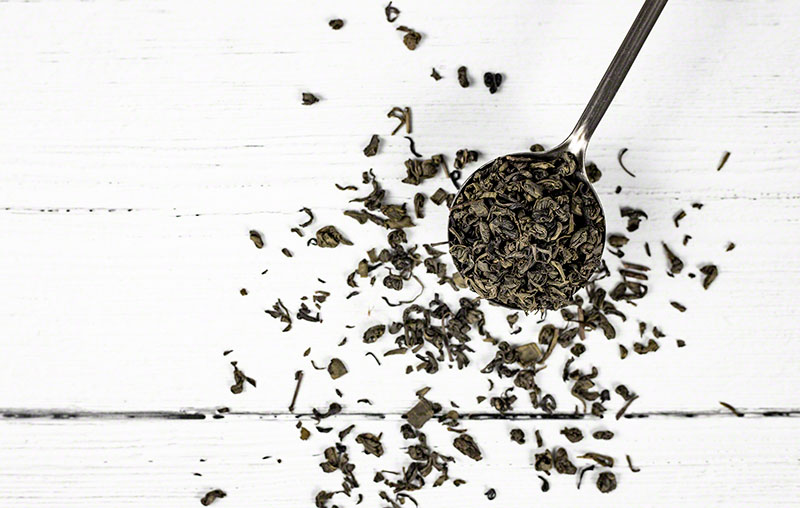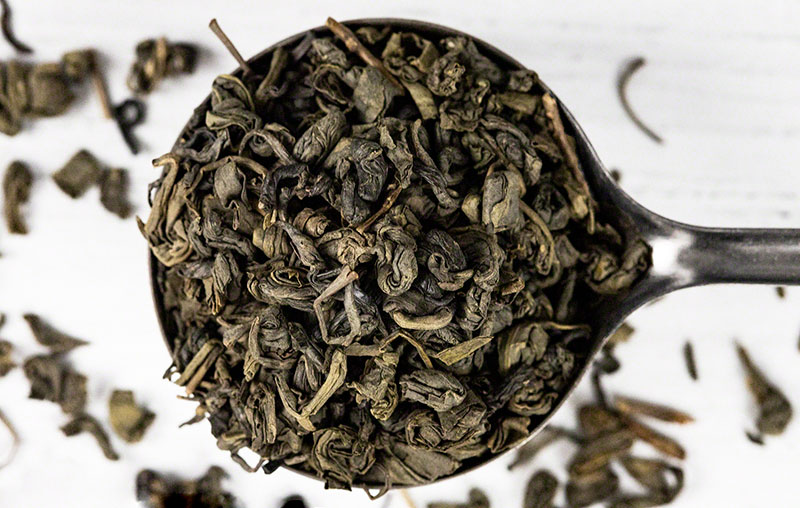What is Gunpowder Green Tea?
If you ever visited an Asian grocery store in search for green tea, you may have stumbled upon Gunpowder tea. Together with Chinese sencha, Gunpowder is a green tea that almost every tea lover tried at least once in life. Today, Gunpowder is available in many tea shops around the world, and still enjoys popularity because of its flavor, versatility and potential benefits. What exactly is Gunpowder tea?
Facts:
- Gunpowder is one of the most versatile green teas in the world–you can drink it with milk, it’s great for blending, you can add it to cocktails, or cold-brew it
- The original name of this tea is “pearl tea”
- The most similar tea to Gunpowder is Chun Mei or Zhen Mei tea.
- Some tea traditions around the world are based on Gunpowder tea
- Gunpowder is one of the older green tea types
Is gunpowder tea a type of green tea?
Yes, Gunpowder, just like all real teas, is made from camellia sinensis plant. It’s one of the most popular green teas in the western countries. It’s origin is the Chinese Zhejiang and it has a very unique and recognizable leaf shape and flavor. Today, Gunpowder is produced in other provinces as well, and even in other countries too.
Gunpowder tea is one of the best examples of an everyday affordable tea that will never go out of fashion. There are different grades of Gunpowder tea, and just as any other type, it can be made from younger or more mature leaves, from different harvests and in different regions and countries.
Today, Gunpowder is still a staple green tea in many households. In the past, it was one of the most important export teas. Even the tea traditions in some countries in the world are based on Gunpowder. For example, famous Moroccan mint tea is made with Gunpowder tea and fresh mint.

Pinhead Gunpowder green tea
What is gunpowder green tea?
Gunpowder is a Chinese green tea with leaves tightly rolled into little pellets. Chinese word for this tea is zhu cha – or pearl tea. In western countries it’s always called Gunpowder, also because of the leaf shape. It’s believed that Gunpowder first appeared during Tang Dynasty, more than 1000 years ago, making it one of the oldest green tea types in the world and one of the first green teas exported from China. Nowadays, Gunpowder is one of the first green teas tea drinkers try. As the drinking preferences changed over time, this green tea is now more often replaced by much lighter and delicate teas. However, it’s still irreplaceable in some cultures. For example, Moroccan Mint tea would never had such a refreshing and unique flavor without gunpowder tea. Light green teas would not be able to hold the flavor of the mint so well.
Caffeine content of gunpowder tea
Caffeine content of Gunpowder tea will depend on many factors. For example, if a tea is made from older, more mature leaves, it’s likely to have less caffeine than the one made from younger leaves. High quality tea is usually made from younger leaves, so it should naturally have a bit more caffeine.
You may be able to tell if your tea has more or less caffeine by looking at how green and small the pellets are. Smaller pellets may indicate fresher younger leaves, while darker bigger pellets are usually made from more mature leaves that have less caffeine.
Gunpowder tea health benefits
Gunpowder is not only one of the most popular green teas in the western countries, it’s one of rare teas that was a subject of many scientific studies. Studies have shown that Gunpowder may have antiviral, antibacterial and anticancer properties[1].
One study showed that Gunpowder green tea may have a higher antioxidant capacity than Dragon Well or even Japanese sencha[2]. The same study showed that teas from Chinese Zhejiang may have a higher anti oxidative ability than those from other regions. The total amount of catechins will depend on many factors – from the growing area to the type of leaves and brewing method. To extract the most catechins from green tea and still get a pleasant cup, brew tea for 3-5 minutes with a water temperature of around 176°F.
Moreover, green tea has been studied against many viruses, bacteria and fungi, including Influenza virus, Herpes simplex, Candida albicans and Helicobacter pylori, where it showed inhibitory properties and reduction of side-effects[3].
Potential benefits of Gunpowder green tea include:
- Antiviral activity [4]
- Antimutagenic activity[5]
- Strong chelating activity[6]
- Anti-inflammatory properties
- Antifungal activity[7]
- Strenghtening immune system[8]
- Increasing bone density[9]
- Increasing fat oxidation
- Anticancer activity
- Lowering cholesterol
- Antibacterial activity
- Lowering blood sugar
- Protecting against heart attacks and strokes
How to brew Gunpowder green tea?
Boil fresh spring water in a clean kettle. Preheat your teaware by pouring hot water in and out. Measure about 3-4 grams of tea leaves per cup of water. Wait until the water temperature drops to around 176°F and steep for about 3 minutes. Strain and drink. Gunpowder blends amazingly well with fresh ingredients like mint and lemongrass so try making your own blend if you are in the mood for experimenting. You can add a spoon of honey if needed, but avoid adding milk to a regularly brewed tea.
Gunpowder is one of the strongest green teas in the world. It has a deeper yellow color and stronger a light smokey note. It can become bitter if over-brewed, so pay attention to the water temperature and steeping time. However, that’s what makes it ideal for iced tea too – a cup that will have enough green tea flavor, is strong enough to carry other notes too, and goes well with a natural sweetener or lemon.
Extra idea:
Gunpowder is perfect for making Pink Milk tea. Because of the high levels of chlorophyll, this tea will develop a vibrant pink color in contact with the bicarbonate of soda. All you need is a small saucepan, bicarbonate of soda and some spices (optional). Make sure to boil the tea leaves for at least 20-30 minutes and add very cold water later. Find the recipe here.
Disclaimer: This article is for informational purposes only. It’s not intended to replace medical advice, diagnosis or treatment. Every person is different and may react to different herbs and teas differently. Never use teas or herbs to treat serious medical conditions on your own. Always seek professional medical advice before choosing home remedies.
References
[1] https://www.ncbi.nlm.nih.gov/pmc/articles/PMC6797950/
[2] https://www.ncbi.nlm.nih.gov/pmc/articles/PMC4549831/
[3] https://www.ncbi.nlm.nih.gov/pmc/articles/PMC2855614/
[4] https://www.ncbi.nlm.nih.gov/pmc/articles/PMC2855614/
[5] https://www.ncbi.nlm.nih.gov/pmc/articles/PMC2855614/
[6] https://www.ncbi.nlm.nih.gov/pmc/articles/PMC6797950/
[7] https://www.ncbi.nlm.nih.gov/pmc/articles/PMC2855614/




